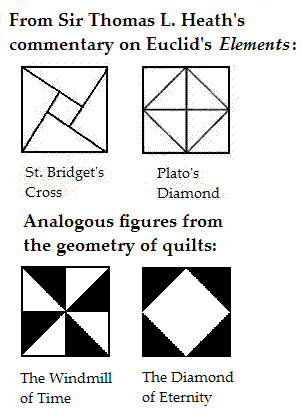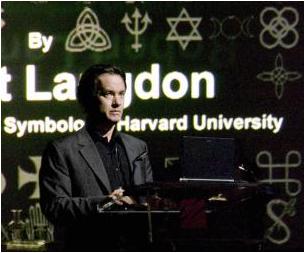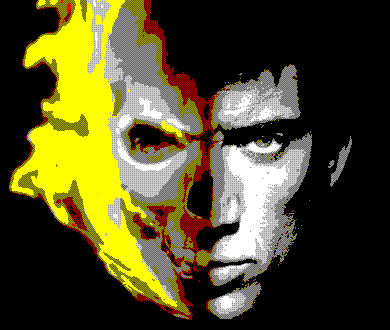of Geometry
From Lectures on the Science of Language, by Max Muller, fellow of All Souls College, Oxford. New York: Charles Scribner's Sons, 1890, pp. 88-90 --
Stoicheia
"The question is, why were the elements, or the component primary parts of things, called stoicheia
by the Greeks? It is a word which has had a long history, and has
passed from Greece to almost every part of the civilized world, and
deserves, therefore, some attention at the hand of the etymological
genealogist.
Stoichos, from which stoicheion, means a row or file, like stix and stiches in Homer. The suffix eios is the same as the Latin eius, and expresses what belongs to or has the quality of something. Therefore, as stoichos means a row, stoicheion would be what belongs to or constitutes a row....
Hence stoichos presupposes a root stich, and this root would account in Greek for the following derivations:--
- stix, gen. stichos, a row, a line of soldiers
- stichos, a row, a line; distich, a couplet
- steicho, estichon, to march in order, step by step; to mount
- stoichos, a row, a file; stoichein, to march in a line
In German, the same root yields steigen, to step, to mount, and in Sanskrit we find stigh, to mount....
Stoicheia are the degrees or steps from one end to the other,
the constituent parts of a whole, forming a complete series, whether as
hours, or letters, or numbers, or parts of speech, or physical
elements, provided always that such elements are held together by a
systematic order."

The Miracle Octad Generator of R. T. Curtis
For the geometry of these stoicheia, see
The Smallest Perfect Universe and
Finite Geometry of the Square and Cube.












Recent Comments